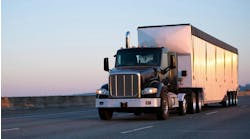FedEx Corp. announced it will not renew its U.S. air-delivery contract with Amazon.com, seeking instead to broaden its own e-commerce delivery business.
In a statement on its website, FedEx explained that ‘there is significant demand and opportunity for growth in e-commerce which is expected to grow from 50 million to 100 million packages a day in the U.S. by 2026.
"FedEx has already built out the network and capacity to serve thousands of retailers in the e-commerce space. We are excited about the future of e-commerce and our role as a leader in it," the company said in a statement.
FedEx said the percentage of revenue attributable to Amazon represented less than 1.3% for the 12-month period ended Dec. 31. This decision does not include other contracts between the companies or involve international services.
Amazon said in a statement that it respects FedEx’s decision and thanked them for its “role serving Amazon customers over the years.
The company recently started Delivery Service Partners, a service that lets entrepreneurs run their own local delivery business with Amazon Prime logos.
Over the last several years, Amazon has been buying cargo planes and heavy-duty trucks to handle more of its own deliveries. Last week, it also said it plans to begin testing drone deliveries for lightweight household goods within a number of months.
Amazon made the announcement as it unveiled the newest Prime Air drone that takes off vertically, then tilts to fly horizontally like a plane. It features artificial intelligence and sensors that allows it to fly without threatening traditional aircraft or people on the ground.
Jeff Wilke, CEO of Worldwide Consumer at Amazon, said in a blog post that Amazon has been working on building “fully electric drones that can fly up to 15 miles and deliver packages under five pounds to customers in less than 30 minutes.”
He added that for the drone to descend, “we need a small area around the delivery location that is clear of people, animals, or obstacles. We determine this using explainable stereo vision in parallel with sophisticated AI algorithms trained to detect people and animals from above.”
Amazon is withholding many other details for now, including where the drones will be tested. Shortly after the unveiling, the U.S. Federal Aviation Administration said it was granting a one-year approval to test the devices in limited ways.
The possibilities of drone delivery also got a recent lift after it was recently made public a custom-made drone transported a kidney from a neighborhood in southwestern Baltimore to a nearby hospital.
The 2.8-mile, 10-minute drone flight was the first in the world to deliver an organ. Surgeons then successfully transplanted the organ into a critically ill patient back in April.
Drones are viewed as critical in saving lives they can help transport organs as soon as possible after they are removed from donors' bodies.
The eight-rotor drone carries sophisticated communications gear and backup batteries to make sure it stays aloft. There's also a parachute to help save the organ in the event of a major malfunction.



